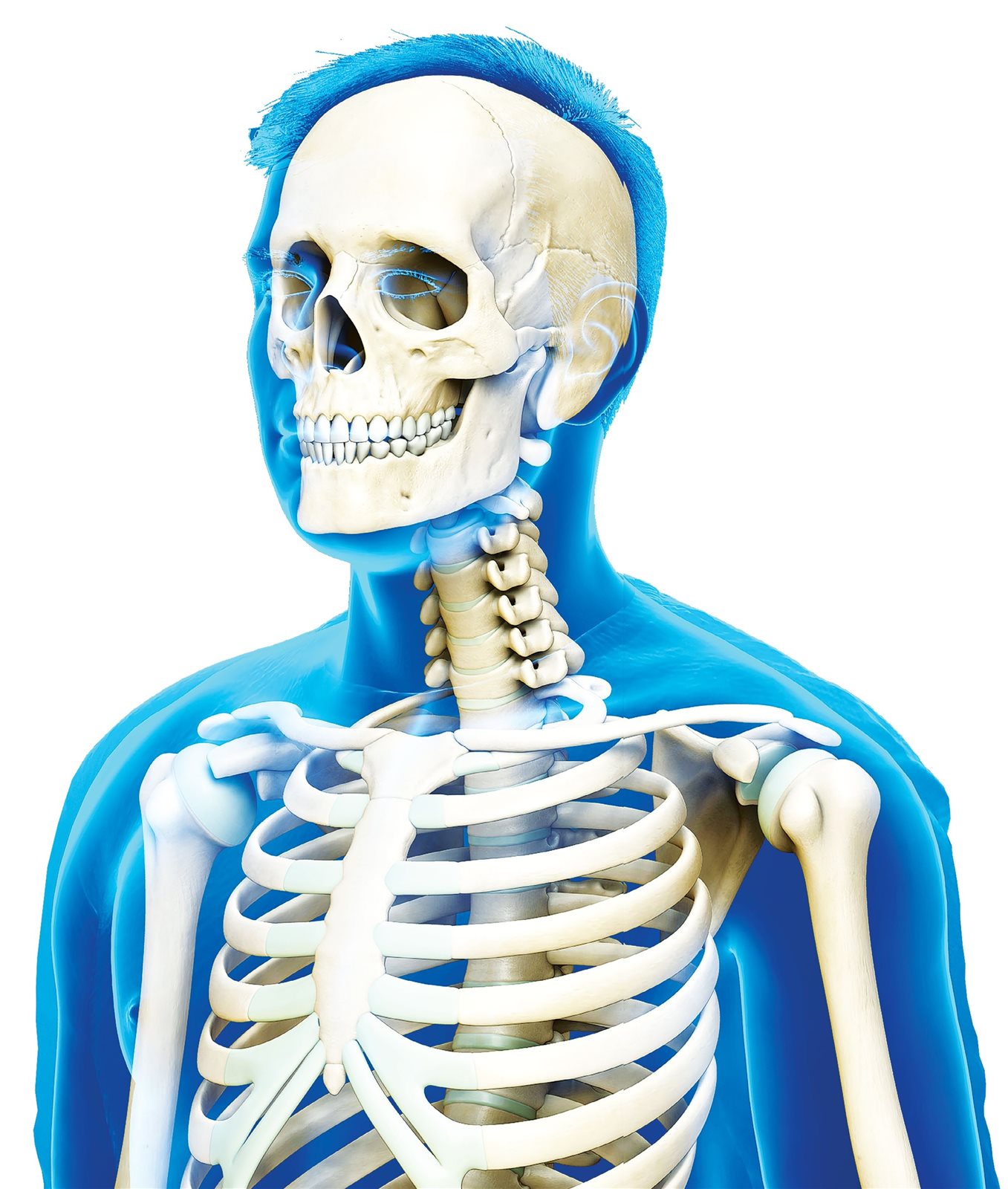
© Getty
Skeletons are often associated with death as part of the body you rarely see during
life. However, you might be surprised to learn that the skeleton is living tissue. Far more than stiff, biological scaffolding, the skeleton comes with its own network of blood vessels, cells, proteins and minerals, continuously transforming and self-repairing to keep your body strong and healthy. The bones that make up your skeleton connect to form shields around delicate organs. The skull seals up when a baby is three months old and its joints close to complete the brain’s armour. Meanwhile, the ribs cross over the heart and lungs like the bars of a cage and a string of vertebrae conceal your spinal cord. Bones also give the body structure. But the skeleton would fall limply into a pile of bones without the assistance of the rest of the skeletal system.
“The bones that make up your skeleton connect to form shields around delicate organs”
DID YOU KNOW?
You are born without kneecaps. These bones form from cartilage at age two to five
DID YOU KNOW?
You are born without kneecaps. These bones form from cartilage at age two to five
Muscles, cartilage, ligaments, tendons and joints connect to the skeleton to protect the bones and enable the skeleton to move.
Muscles are attached to the skeleton by tendons and serve as the puppeteers of bones, contracting and relaxing to manipulate joints, while ligaments join the bones together and cartilage tissue forms the padding between them. The body can dance, stretch, crouch, grab, poke and jump. All the actions you can perform are a result of 360 joints being perfectly positioned. But not all the skeleton’s joints are the same. Some are ball-and-socket joints, found at the shoulder and hip, which allow backward, forward and rotating movements. Others are hinges in the fingers, knees, elbows and toes – limited to bending and straightening.
The neck is a pivot joint and can perform limited rotations, and wrist joints are called ellipsoidal joints. Ellipsoidal joints give you flexibility to move in any direction except pivotal movements – for example, your wrist can’t rotate independently of your forearm bones. When combined, this intricate collection of bones and joint structures grants you the ability to interact with the world.
DEM BONES
How a connected collection of bones works together to hold up your body
1 SKULL Adults have 22 skull bones, which fuse together and harden to encase the brain.
2 CERVICAL SPINE
Seven vertebrae at the top of the spine support the weight of your head.
3 STERNUM A flat, 15-centimetre T-shaped bone serves as a central connection point for the ribs.